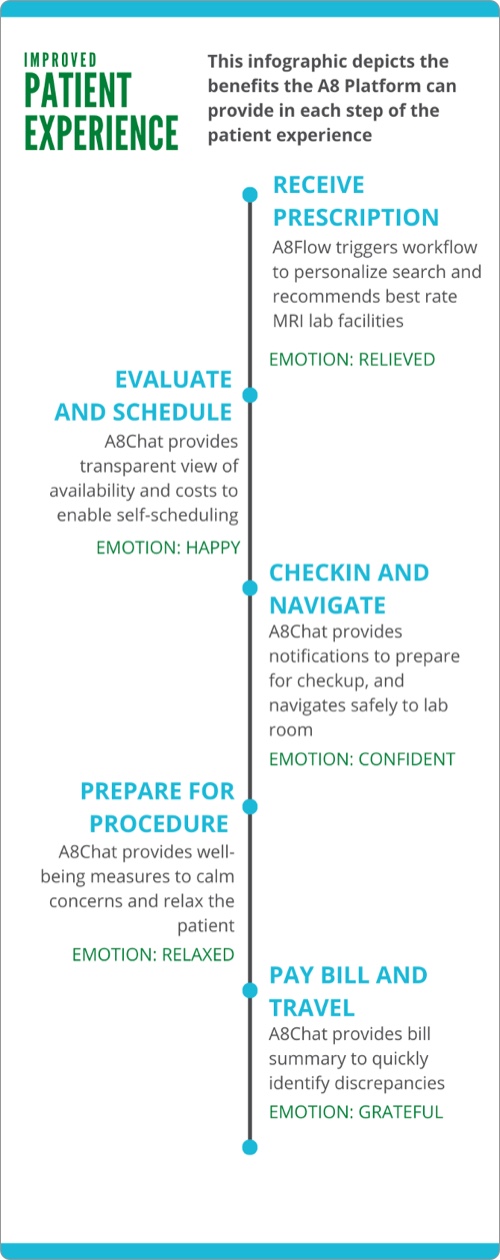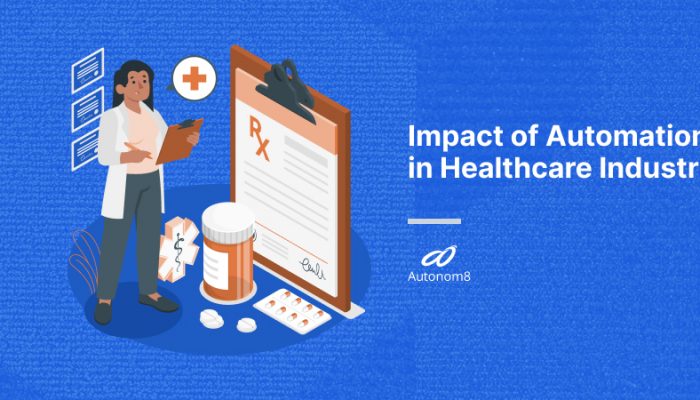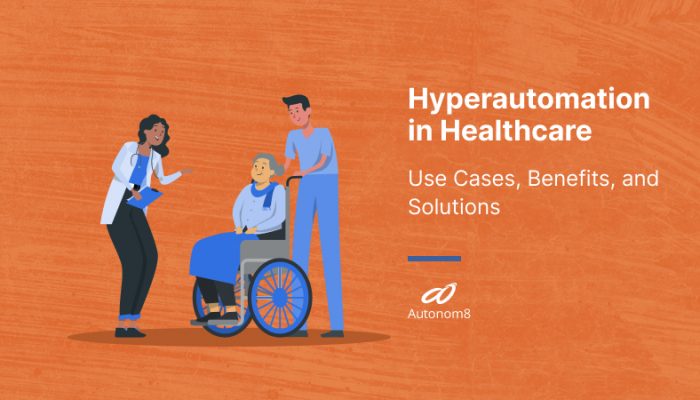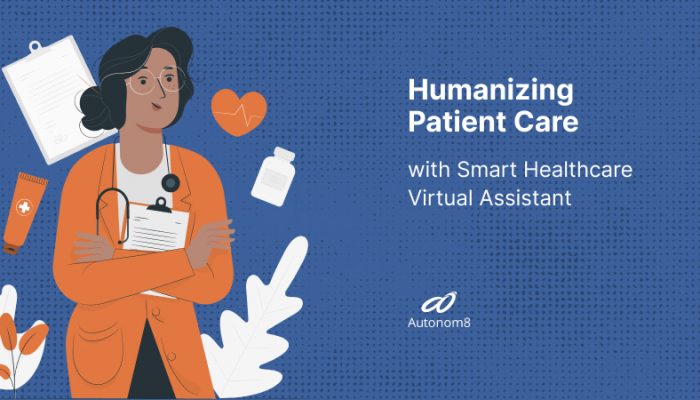Patients seeking care within their network go through a series of steps to register with a given hospital. Let’s walk through a typical patient experience. Take the example of Thomas, who is a 30-year-old male working in the IT industry. Thomas has lately been experiencing nausea and intermittent abdominal pain. His doctor advised him to get an MRI scan conducted to identify potential problems in his pancreatic duct. Since his childhood, Thomas has been scared of hospitals. So he is nervous to realize that he has to visit one, while the COVID-19 crisis is still raging through his city.
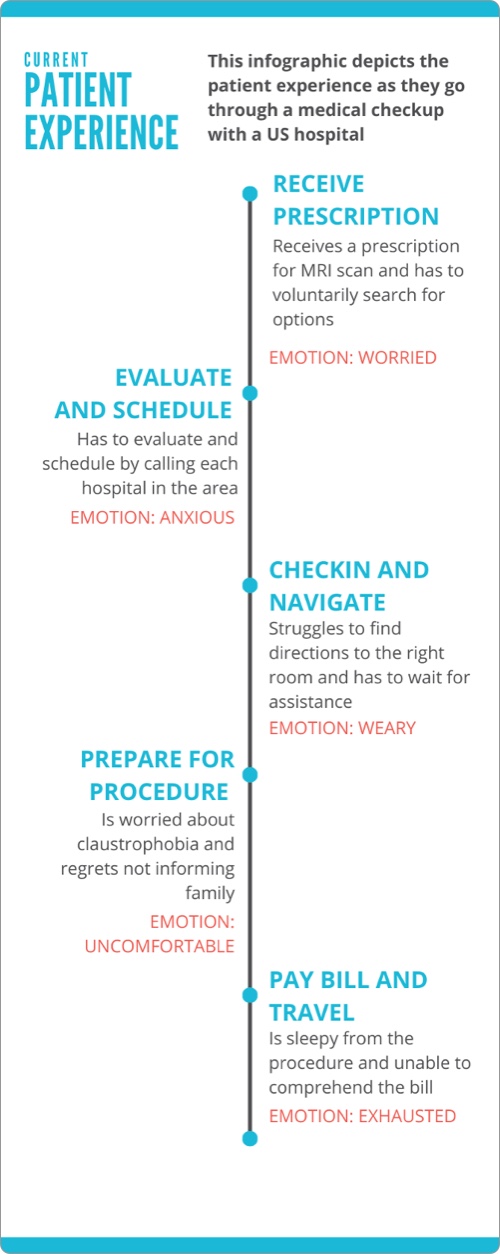
Receive a prescription from a Primary Care Physician (PCP)
Thomas receives a prescription from his doctor or PCP to get an MRI scan to identify his pancreatic duct issues. Thomas is not provided with any recommendations from his doctor. So he sets out to find hospitals that can perform an MRI scan close to his home. He feels anxious about his health after his conversation with the doctor and is worried about going through an MRI for the first time.
Evaluate potential hospitals and schedules appointment via phone call
Thomas searches online for hospitals available with his health plan, which shows 10-12 hospitals in his area, which offer MRI scans. He then evaluates the feedback and reviews of these five hospitals and doctors on sites like Healthgrade. He narrows his search down to three hospitals with good reviews and calls them to find availability for the coming week. Only one of them responds to his calls and provides him an appointment for the week after. Since he does not have too many options, and his anxiety is growing, he decides to accept that appointment.
Check-in to the hospital and arrive at the waiting room
Thomas is still suffering from his abdominal pain on the day of the appointment, so he decides to take a cab to the hospital. He struggles to find directions to the right building and floor. The hospital is crowded, and the front desk staff is swamped with requests. Thomas waits away from the crowd to prevent the risk of getting infected. He gets a chance to ask for directions after 10 minutes and makes his way to the MRI scan lab.
Undergo medical procedure
Thomas has always been concerned about visiting hospitals, and his fears grow as he makes his way to the MRI lab. He had a mild case of claustrophobia, and the interiors of the lab only end up amplifying it. Thomas changes his clothes to a hospital gown and apprehensively waits his turn at the scanner. He regrets not informing his sister about the visit and longs to have someone by his side to give him comfort. He requests a sedative to calm down, and the technician administers a small dose before asking him to lie down on the scanner.
Pay the bill and travel back home
The scan did not take too much time, but it feels like Thomas spent hours inside the MRI scan chamber. He changes back to his clothes and starts to leave the lab, but the sedative was still strong, and he has trouble walking around to the hospital entrance. He requests a front desk associate to help him book an Uber back home. He then receives a bill from the front desk, which was way higher than expected. It is hard to comprehend, considering his state, and he ends up paying without trying to understand the bill better.
Thomas finally reaches his apartment, tired and sleepy. He makes a quick mental note to verify if he was charged correctly on his phone and plan his subsequent hospital visits.



